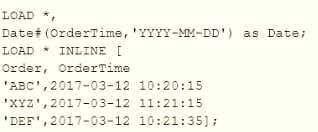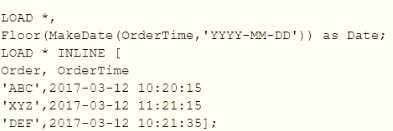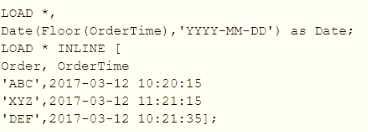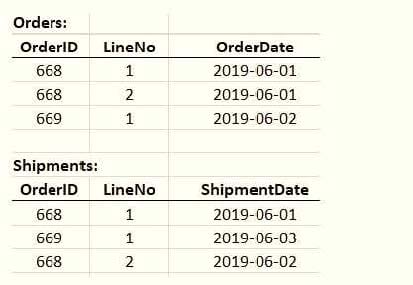
QSDA2019 Exam Questions & Answers
Exam Code: QSDA2019
Exam Name: Qlik Sense Data Architect Certification Exam - June 2019 Release
Updated: May 07, 2024
Q&As: 52
At Passcerty.com, we pride ourselves on the comprehensive nature of our QSDA2019 exam dumps, designed meticulously to encompass all key topics and nuances you might encounter during the real examination. Regular updates are a cornerstone of our service, ensuring that our dedicated users always have their hands on the most recent and relevant Q&A dumps. Behind every meticulously curated question and answer lies the hard work of our seasoned team of experts, who bring years of experience and knowledge into crafting these premium materials. And while we are invested in offering top-notch content, we also believe in empowering our community. As a token of our commitment to your success, we're delighted to offer a substantial portion of our resources for free practice. We invite you to make the most of the following content, and wish you every success in your endeavors.

Download Free Qlik QSDA2019 Demo
Experience Passcerty.com exam material in PDF version.
Simply submit your e-mail address below to get started with our PDF real exam demo of your Qlik QSDA2019 exam.
![]() Instant download
Instant download
![]() Latest update demo according to real exam
Latest update demo according to real exam
* Our demo shows only a few questions from your selected exam for evaluating purposes
Free Qlik QSDA2019 Dumps
Practice These Free Questions and Answers to Pass the Qlik Sense Data Architect Exam
A table is generated resulting from the following script

When the data architect selects a date, some, but NOT all, orders for that date are shown How should the data architect modify the script to show all orders for the selected date? A)

B)

C)

D)

A. Option A
B. Option B
C. Option C
D. Option D
Refer to the exhibit.

A data architect is loading the tables and a synthetic key is generated. How should the data architect resolve the synthetic key?
A. Create a composite key using OrderlD and LineNo
B. Remove the LineNo field from Shipments and use the AutoNumber function on the OrderlD field
C. Remove the LineNo field from both tables and use the AutoNumber function on the OrderlD field
D. Create a composite key using OrderlD and LineNo, and remove OrderlD and LineNo from Shipments
Refer to the exhibit.


Refer to the exhibits.
While using an app, the users report that some Sales Reps do NOT have personal details, like Division or
Address Number A data architect has been called in to investigate. The data architect uses the data model
viewer to determine the relationship between the SalesRepMaster and CustomerMaster tables.
What is the cause of the issue?
A. 26 values for Sales Rep are null in CustomerMaster
B. 40.7% of the Sales Rep have CustomerMaster information
C. 59.3% of the Sales Rep have CustomerMaster information
D. Density is 100% while Total Distinct and Present Distinct are NOT the same
A data architect needs to load large amounts of data from a database which is continuously updated New records are added, and existing records get updated and deleted. Each record has a LastModified field All existing records are exported into a QVD file. The data architect wants to load the records into Qlik Sense efficiently. Which steps should the data architect take to meet these requirements?
A. 1. Use a partial load to load new and updated data from the database.
2.
Load the existing data from the QVD without the updated rows that have just been loaded from the database. Concatenate with the new and updated records.
3.
Use the Peek function to remove the deleted rows.
B. 1. Load the new and updated data from the database
2.
Load the existing data from the QVD without the updated rows that have just been loaded from the database. Concatenate with the new and updated records.
3.
Load all records from the key field from the database and use an Inner Join on the previous table.
C. 1. Load the existing data from the QVD.
2.
Load the new and updated data from the database without the rows that have just been loaded from the QVD. Concatenate with data from the QVD.
3.
Load all records from the key field from the database and use an Inner Join on the previous table.
D. 1. Load the existing data from the QVD.
2.
Load new and updated data from the database. Concatenate with the table loaded from the QVD.
3.
Create a separate table for the deleted rows and use a WHERE NOT EXISTS to remove these
records.
A data architect is developing an app that will generate QVDs for multiple business analysts. The field naming conventions on the source data are NOT business friendly. For every table loaded, multiple fields will require a name change. An Excel file is maintained centrally that lists all source data field names and the appropriate names as they should appear in the QVDs
Which strategy should the data architect use to meet these requirements?
A. Use the Rename function and a mapping load
B. Create master items using business-friendly names
C. Use the Alias function and a mapping load
D. Load in the Excel file as a data island and use the Peek function
Viewing Page 3 of 3 pages. Download PDF or Software version with 52 questions

